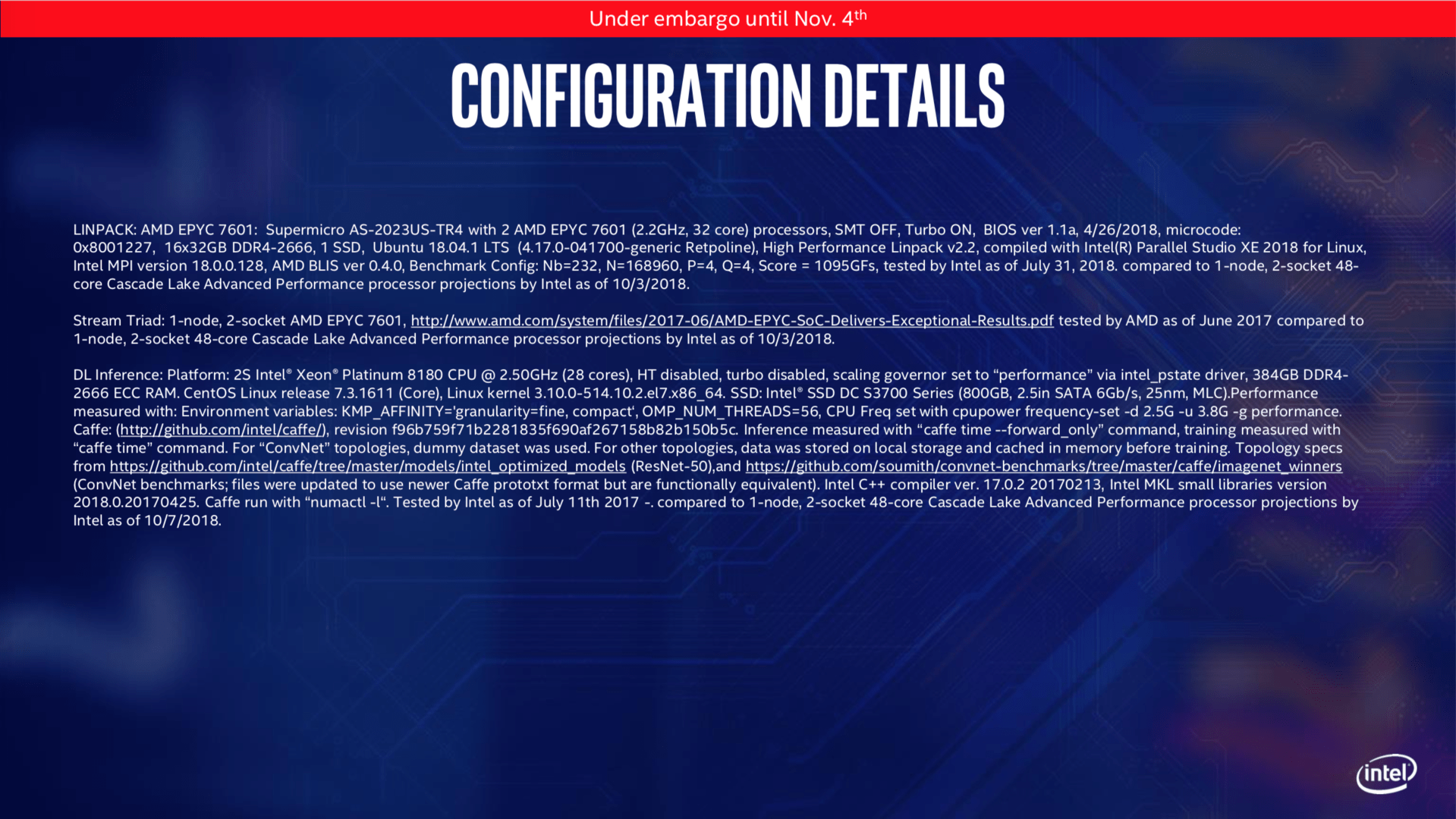- Jun 10, 2004
- 14,607
- 6,094
- 136
Source:
https://www.anandtech.com/show/13535/intel-goes-for-48cores-cascade-ap
The good:
-Up to 48 cores per socket
-Aimed at 2S servers
-12 DDR4 channels
-Possible 5903 pin LGA socket
-Launch 1H2019?
The bad:
-14nm...
-UPI connection - no EMIB yet
-No mention of hyperthreading
-28-core XCC dies --> 24-cores "glued" together
The ugly:
-A current 24-core Xeon Platinum runs at 205W
-AMD launch of 7nm Epyc Rome imminent
-They disabled SMT on Epyc for performance comparisons
https://www.anandtech.com/show/13535/intel-goes-for-48cores-cascade-ap
The good:
-Up to 48 cores per socket
-Aimed at 2S servers
-12 DDR4 channels
-Possible 5903 pin LGA socket
-Launch 1H2019?
The bad:
-14nm...
-UPI connection - no EMIB yet
-No mention of hyperthreading
-28-core XCC dies --> 24-cores "glued" together
The ugly:
-A current 24-core Xeon Platinum runs at 205W
-AMD launch of 7nm Epyc Rome imminent
-They disabled SMT on Epyc for performance comparisons



